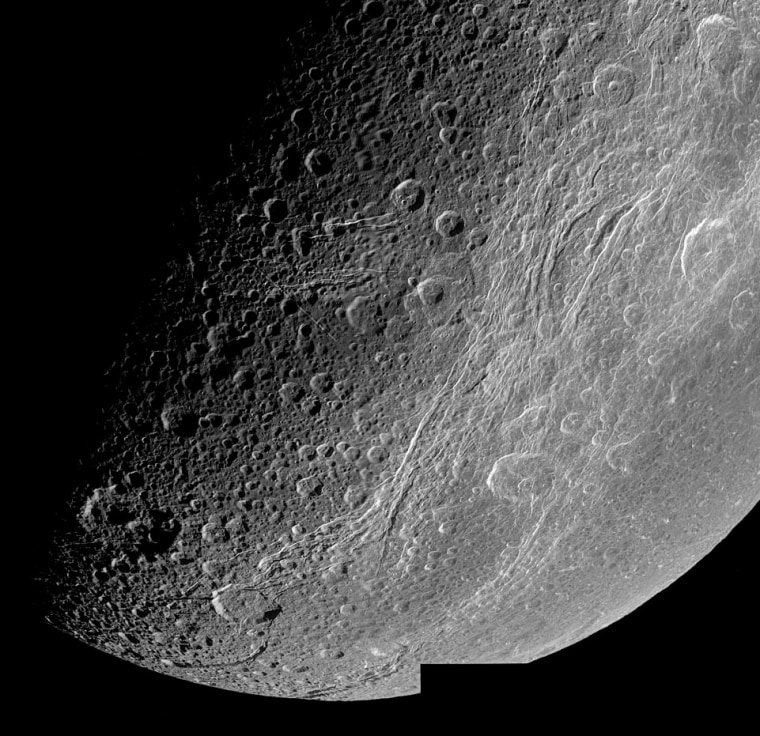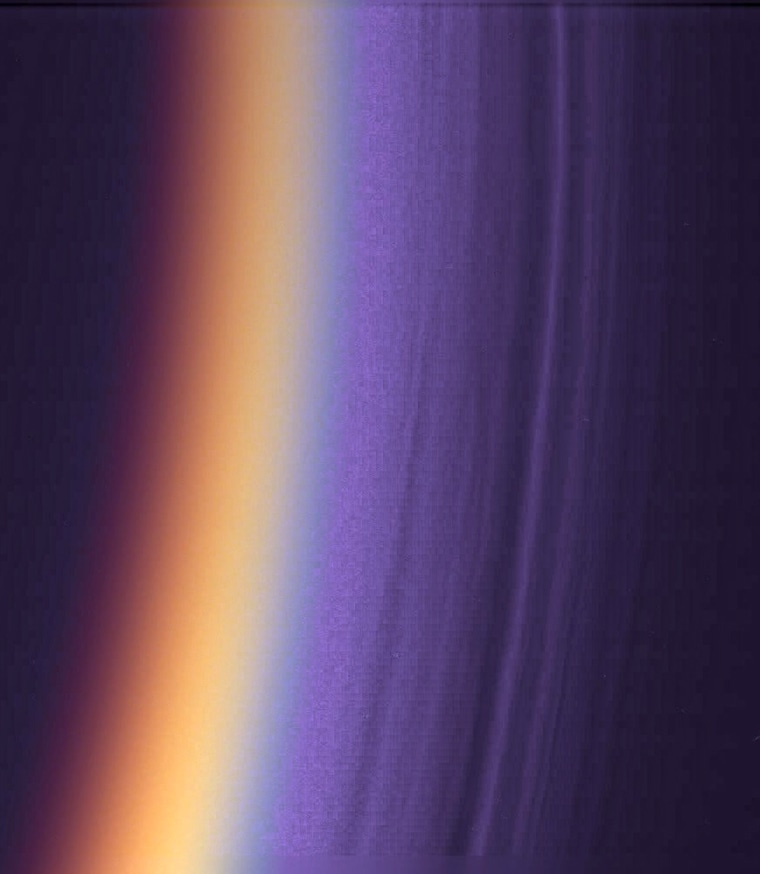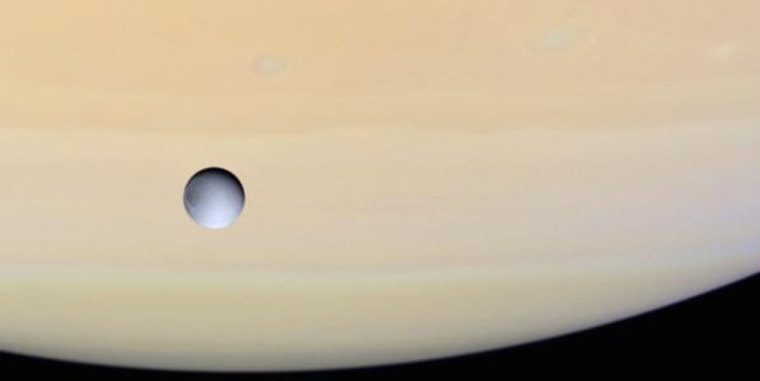The Cassini spacecraft's close flyby of Saturn's mysterious moon Titan this week revealed clouds that will give clues to its weather, but the pass left scientists still puzzled about its surface.
A flyby of another of the ringed planet's many moons, Dione, produced more immediate rewards: It revealed that wispy features long thought to be ice deposits are actually tectonic fractures that have left ice cliffs.
The findings were released Thursday by members of the mission's science team during a telephone news conference at the fall meeting of the American Geophysical Union in San Francisco.
"This week has been the tale of two moons," imaging scientist Carolyn Porco said. "One of them has been like out of a Lewis Carroll story and gets curiouser and curiouser the more we look at it and the closer we get, and the other turns out to be gloriously clear and has given us what I consider to be one of our most surprising results so far."

Titan, the only moon in the solar system with an atmosphere, is a major target of the $3.3 billion U.S.-European mission to explore Saturn, its spectacular rings and satellites. In Cassini's second close-up of Titan, the spacecraft flew within 750 miles of the moon's surface on Monday.
Cassini carries the European Space Agency probe Huygens, which will be launched next week on a course to plunge into Titan's extremely hazy atmosphere in January and parachute to the surface, radioing images and data on the way down.
Jean-Pierre Lebreton, ESA's Huygens project manager, told reporters that a final review Thursday found the probe launch ready to go. "It all looked good. The conclusion is that we can proceed to the next step," Lebreton said.

Cassini has pointed an array of instruments at Titan, but images sent back to Earth have not allowed scientists to determine whether the surface is solid, or to test theories that it has hydrocarbon lakes.
In the atmosphere, however, Cassini recorded images Monday that showed patches of clouds at middle latitudes that weren't present when the spacecraft took pictures less than two months ago.
The movement of the new clouds will help show how Titan's atmosphere circulates, said Kevin Baines, who works with Cassini's visual and infrared mapping spectrometer.
